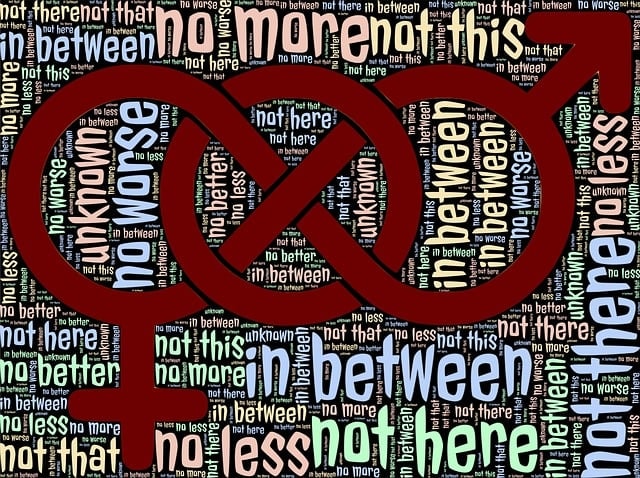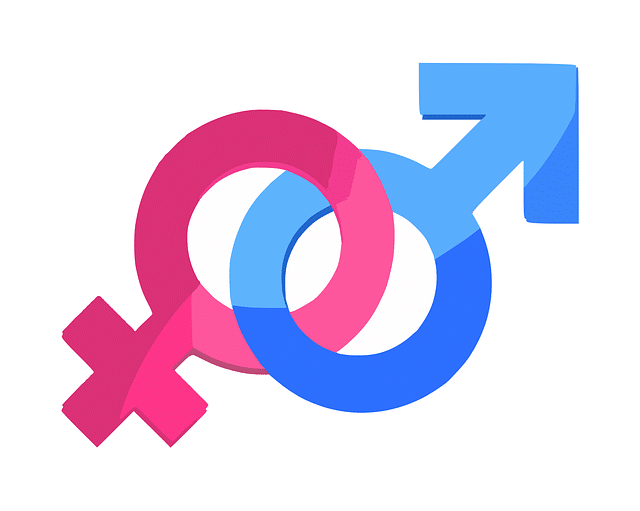

Despite efforts to flatten the nuance out of gender discussions and force people into identifying within strictly binary categories, gender pronouns are here to stay. They are an important way to express one’s gender identity, and using the right pronouns is a show of respect. You don’t have to understand or even agree with gender diversity to respect the right of others’ to identify the way they want. So, we will continue to see preferred pronouns.
Most of us understand gender pronouns like she/her and he/him. Pronouns that are gender neutral are also being adopted widely (they/them). But, what about pronouns the seem to cross categories? For example, he/they or she/them? What do these combinations mean, and how can we address folks who prefer them in an inclusive way?
Gender Vs Sex
Many of us experience a one to one relationship between our male or female identity and our gender. There’s nothing negative about that, but this doesn’t reflect the reality of many queer, trans, or nonbinary individuals. Additionally, it’s important to remember that transgender is an umbrella term that includes but isn’t limited to individuals who were assigned male but identify as women or assigned female but identify as masculine. There are queer, agender, non-binary, Two-spirit and other identities that may fall under this broad category.
Gender Identity And Pronouns
Pronouns matter. They are much more than simple shortcut words used to refer to ourselves and others. They are a form of recognition and often make it clear how we feel about the other person or ourselves. Using the right pronoun respects a person’s identity. Using the wrong one is disrespectful to that identity. That applies to everyone not just transgender or non binary people.
Want to dehumanize someone? Call them “it”. Strip someone of their masculinity? Imply they are effeminate and use pronouns like she or her. Women are often insulted and have their femininity viewed as lacking by people who will use language to imply they are too masculine or man-like – e.g.: he/him.
Point being that pronouns, gender identity, and humanity have always been intertwined. They aren’t a modern invention or something created just to pander to certain groups. Using wrong pronouns isn’t just disrespectful. It’s dehumanizing.
Why He/They or She/They? For Trans & Non Binary People
Most people have a pronoun preference that aligns with their gender identity. For example, people who identify as women use she/her and non binary people may use they/them. This may reflect the gender they were assigned at birth or a gender identity that they now recognize as being authentic for them now.
However, as you’ve seen preferred pronouns in emails, on name tags, or in social media profiles, you may have encountered some who use some mix of masuline/feminine with non binary or agender pronouns like they/them. This can be offputting when you first see this. You may wonder how that aligns with a particular gender identity, or how you should refer to this person.
Sometimes People Are Flexible
Simply put, some folks are okay with others using a gendered or a non-gendered pronoun to refer to them. So, a person who identifies as a man might be okay with an exclusively masculine pronoun like he, but also feel okay if they are addressed as them.
Masculinity And Femininity Are Not Set in Stone
Some people use multiple pronouns that cross gender categories because they relate to both masculinity and feminity in some way. For example, you may encounter someone who is non-binary with a strong attachment to the feminine part of their identity. To them, the terms she and they both work as gender pronouns.
They Are Exploring or Unsure
Some individuals use he/they or other pronouns that cross the feminine/masculine divide because they are still fleshing out their identity. They may stick with neutral pronouns in the future or adopt one pronoun combination that works for them. By honoring how they identify right now, you also honor their personal experiences and journey.
Confusing? It Doesn’t Have to Be!
Remember that gender is a social construct not a pair of rigid boxes. Recognizing this isn’t as simple as creating a third category for the non binary identity, and just assuming that all folks will fit neatly into one of the three boxes. Not everyone fits into just one box, nor do they want to. There is no singular way to do gender identity or gender expression.
The beautiful thing about learning which pronouns that people prefer is that we don’t have to analyze things. We don’t have to fully know or understand a person’s journey as it relates to their gender identity. All we have to do is simply call them by their name and pronouns.
Let’s Discuss The Singular Pronouns They/Them
Some people prefer they/them. They may do this because they have a non binary identity or because they have other reasons for not using gendered pronouns. Regardless of the reasons why, not everyone is respectful of this choice, and many weaponize rules of language to justify this. Let’s talk about it.
They/Them is Incorrect When Referring to a Singular Person – Right?
Most style guides disagree. So does Shakespeare and the bible. They/them have been used as single person pronouns in many contexts. They can certainly be used to validate a person’s identity.
They/Them Reduces Clarity And Causes Confusion – Doesn’t It?
Sometimes, this is true. However, this doesn’t only happen when pronouns are used where gender diverse folks are concerned. When you use a pronoun, you are replacing a directly identifying word like the name John and replacing it with a word that isn’t so direct. If there isn’t proper context to tell us which person the pronoun points to, there might be confusion.
So, do we eliminate pronouns altogether and only refer to ourselves and others by our proper names? Of course not! Instead, we offer and ask for context, clarify, and ask questions to ensure we understand one another. Sometimes the solution is to just use a person’s name and their pronoun in the same sentence.
They Are Just Words – Aren’t They?
If the average transgender person only dealt with being called by the wrong pronouns from time-to-time, it might not be such a big deal. The issue is that a seemingly small issue like using the correct pronouns can feel like death by a thousand paper cuts when that example of misgendering happens over and over again. Now, add that to state sponsored attacks on transgender rights, increased violence against trans individuals, inordinate levels of poverty and homelessness, and a bevy of micro-agressions that this community faces each day.
Disrespecting pronouns or just getting them wrong can trigger gender dysphoria regardless of intention. No, you aren’t a bad person for making a mistake. Just know that trans individuals aren’t being dramatic because they want to be addressed by the correct pronouns. They also don’t want to go through the process of explaining, answering questions, or justifying themselves.
Can’t People Just Choose One or The Other?

Nobody should have to choose an identifying descriptor that doesn’t correctly reflect their authentic feelings simply because it is more convenient to others. This thought process reflects an assumption that others are choosing how they refer to themselves based on your feelings.
How somebody chooses to identify, whether that reflects their assigned sex or not, is deeply personal. That choice is for their friends, family, and acquaintances to accept – not for them to explain or justify to others. Often, the answer to the question, “Why do you use she/they pronouns?” is simply because that person wants to.
Other Times to Use Gender Neutral Pronouns
Pronouns that are gender neutral aren’t just for people who are transgender or who identify outside the male/female binary. There are many instances where it is respectful and appropriate to use these pronouns. For example, if you are in a conversation or in a public setting where a person’s gender identity is not known. For example, if you talk about someone you have never met, use pronouns that don’t presume gender rather than assuming they are male or female. This is true, even if you believe you can determine this based on appearance, name, or voice. Adjusting your pronoun use makes everyone feel accepted and avoids assumptions that lead to uncomfortable situations.
You also create a more inclusive environment when you use gender neutral pronouns. You make it clear to transgender and other gender-diverse folks that they are welcome in the spaces you occupy. Likewise, you make your position clear to those who might make trans people feel unwelcome.
Use of pronouns that are gender neutral also contributes to respect for intersectionality. Many other cultures have a long tradition of recognizing gender diversity. Using they/them shows respect for those communities and their histories rather than assuming everyone has adopted binary categories based on the sex a person was assigned at birth. Additionally, it recognizes that both transgender and cisgender people may use neutral pronouns to reject norms imposed by society or to support gender-diverse friends and family.
Using they them in conversations and addressing others can avoid embarrassing mistakes. If you don’t know how to refer to a person, there’s no need to guess wrong. You can save face and preserve that person’s dignity. You also provide them with a path to state their preferred pronouns and name.
Respect The Identities of Trans People And Others
Do you want to contribute to a more inclusive environment for those with queer identities? If so, the most foundational thing that you can do is address people with pronouns and names they prefer. This will always lead to better outcomes and relationships rather than making assumptions based on male or female sex categories assigned at birth, sexual orientation, or incorrect assumptions.





